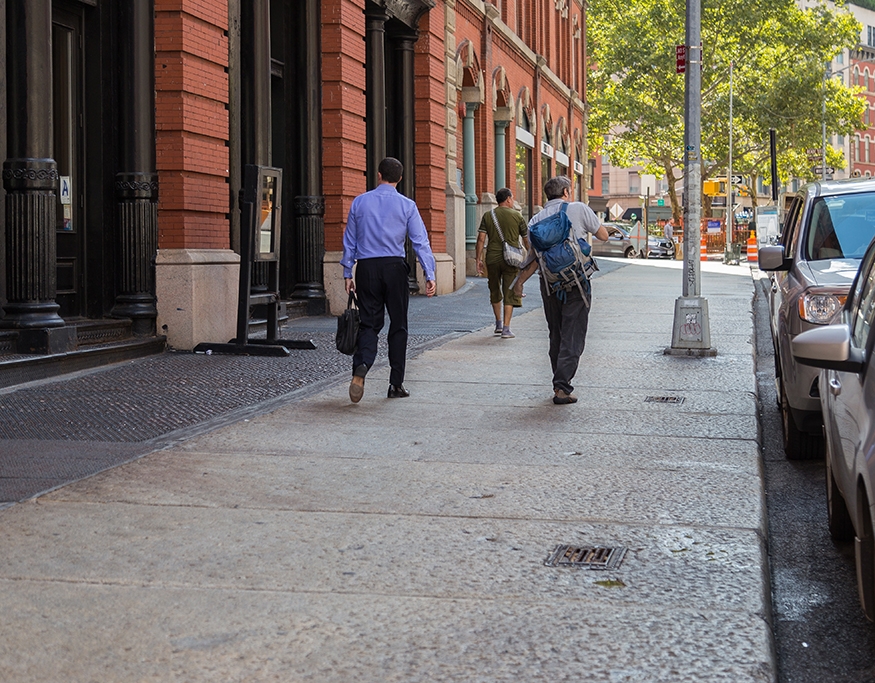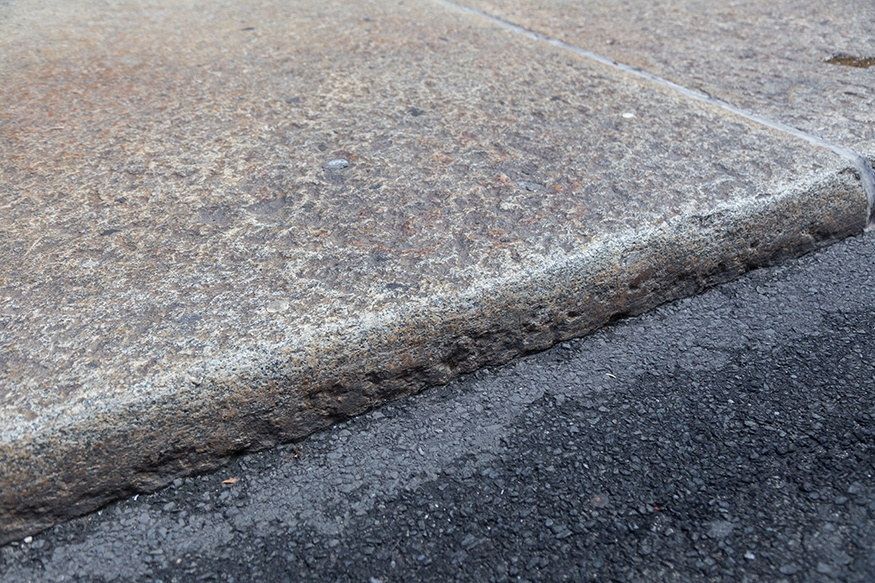Usage: Historic
Historic stone paver, with varieties of color, texture, and veining. Can be cut to extremely large sizes to span underground vaults. The preservation and in-kind replacement of granite slabs are normally required in new construction projects within historic districts; the installation of new granite slabs is typically recommended in locations adjacent to existing granite.

Hudson Street, Manhattan

Granite slab
Benefits
- Reinforces historic character
- Adds distinction and visual enhancement to sidewalk
Considerations
- Not intended to support heavy vehicles when spanning underground vaults
- Higher up-front cost than concrete
Application
- This material is Standard in historic districts where LPC sidewalk regulations remain in force or other areas with existing granite pavers where historic fabric remains intact, per LPC guidelines
Design
Specification source: LPC guidelines, DOT Standard Specifications Section 6.04
- Granite: to match size and color of existing flags, 3-inch minimum thickness
- Slip resistance: minimum 0.60 coefficient of friction wet
Maintenance
- In historic districts, adjacent property owners are generally responsible for maintaining this material
- Use of this material outside historic districts requires a maintenance agreement
- Difficult to repair or patch in sections
- All sidewalk repair or replacement in historic districts requires written approval from LPC

